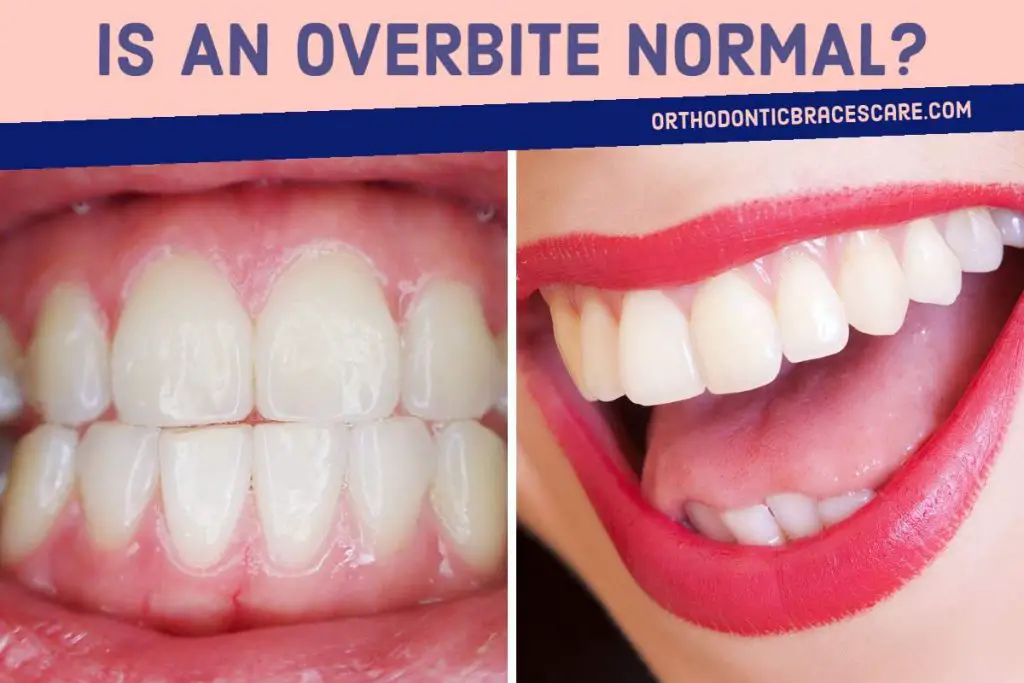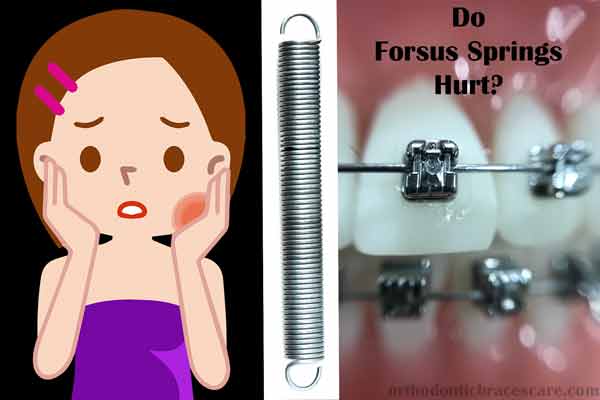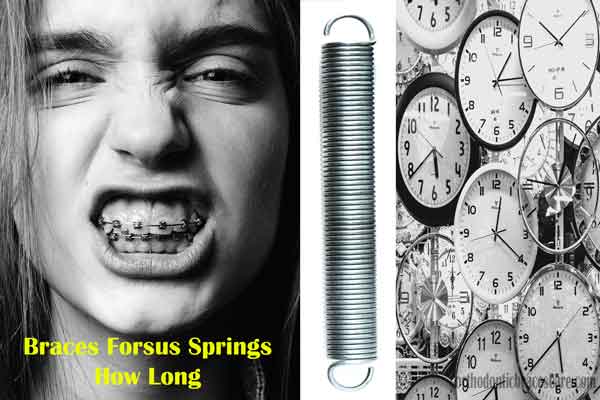People are concerned about their look as well as the function of the teeth, jaw, mouth, and teeth. So, many of them want to know, “Is an overbite normal? How to diagnose it?”
Overbite is normal as long as it is within the normal range that is 2 to 4 mm. Overbite present in every individual. When upper and lower teeth remain in this relation, you look esthetically pleasant.
However, when the overbite is less or more than that range, it can be a problem and you may need orthodontic treatment to fix it.
You might also want to know the answer to your other questions.
When is an overbite severe?
What are the symptoms, and effects of excess overbite?
How to diagnose it?
Let’s begin.
Is it bad to have an overbite?
An overbite can be bad when it’s above the ideal range. Excess overbite affects the appearance of the face and smile. A severe deep bite can lead to jaw pain, TMJ disorders, or difficulty in eating.
However, it isn’t considered bad, when you have a little bit larger overbite, which does not interfere with function or cause any problem.
In the case of a horizontal overbite, esthetic problems can be a primary problem in most cases.
What is an overbite and what is the normal range?
Many people ask, Do I have an overbite? Usually, upper teeth are protruded forward or overlap the lower teeth to a certain limit, that’s called an overbite.
- The orthodontist considers it ideal when it’s 5 to 25 percent.
Overbite is of two types such as vertical and horizontal.
- Upper teeth are protruded forward than the lower teeth, it’s called a horizontal overbite or overjet.
- Upper teeth overlap the upper portion of lower teeth, it’s called a vertical overbite.
Overbite is very common and usually genetic. Normally, primary teeth don’t have an overbite.
The tip of the upper teeth touches the lower teeth in a straight line. Some may have mild overbite during that time.
Then, when permanent teeth erupt, children develop an overbite. Usually, it maintains the ideal value which is good for esthetics and function.
If the kids have any growth problems or bad habits, they may end up with an excess overbite or an underbite.
An underbite is a case when lower teeth are placed forward than upper teeth.
You can also know about underbite from your other article.
When can you consider overbite as normal?
In the following condition you don’t need to worry about overbite:
In the normal range:
If the overbite is in the ideal range that’s 2-4 mm or 5 to 25 percent, you don’t need to do anything with it.
If you or your child don’t have any other habits such as tongue thrusting or thumb sucking, the bite will remain normal.
However, in the case of a child, the bite may later after the completion of growth.
So, you should always consult with an orthodontist.
He or she will perform various calculations, predict the growth, and take steps based on it.
Minor cases:
When it’s a little higher than the normal range, it doesn’t cause any problem. It doesn’t even make you aesthetically unpleasant. If it’s 1-2 mm higher than ideal, you may consider it as normal.
It is better not to take the treatment to fix that minor problem as the orthodontic treatment takes a long time and a lot of effort.
Not only that, but we also have to be careful about retention periods or it can come back.
You don’t need to fix any malocclusion or bite solely for esthetic purposes.
Always, keep in mind that your appearance is a relative matter.
It’s up to you what you think about yourself. It doesn’t matter what people think.
What happens if the overbite is much higher than the normal range?
A slightly higher overbite may not cause any problem, but excessive overbite may cause esthetic, functional, and other problems.
First of all, it doesn’t give a natural appearance for the face. Smiling also affects me because of it.
It gets uncomfortable for many children and adults. But, it’s up to you if you bother it.
However, a large overbite can affect the function of your teeth and mouth, especially in case of a vertical or deep bite. Some may feel difficulty with eating and speaking.
Some people may face more serious complications such as jaw pain, gum recession, limited mouth opening, TMJ disorder, mouth breathing, and severe headache.
If someone has an excess overbite from childhood may face a lot of problems in the future.
Other people don’t notice any serious problems, especially in a horizontal overbite.
If you notice your child is developing the bite problem due to bad habit or bone growth, you should consult with the orthodontist.
Every detection of an overbite can save someone from getting surgery to fix it in the future.
Do overbites worsen with age?
A severe overbite can get worse with ages. Untreated overbite leads to slurred speech, especially in older people.
Jaw muscle also gets strained and results in pain. Sometimes, people develop limited mouth opening or lock jaws or clicking sound in the TMJ.
It can cause various TMJ disorders over time. In case of deep bite, lower teeth may occlude on the margin of the gums.
This leads to gum recession as well as weak periodontal tissue with age. Some patients deal with pain in teeth or damage.
How to diagnose overbite?
If the patients have bad habits such as thumb sucking, nail-biting, using a pacifier, or pushing the teeth with their tongue, it’s important to diagnose whether he or she has an excess overbite and overjet.
Moreover, early diagnosis of the overbite and associated problems are crucial because it can lead to many problems later and make the situation worse.
If we can diagnose it in early childhood, you can get the best outcome from the treatment. So, you should learn how to diagnose it at home.
You can diagnose an overbite easily at home by using simple instruments and methods.
Let’s take a look at the techniques:
1. Diagnosing at home own your own
Here are the steps by which you can diagnose an overbite at home on your own.
i) Look at your teeth in a mirror.
Take a mirror and stand in front of a mirror. Try to keep your mouth and lips as close to the mirror as possible.
Expose your teeth or say “E..”. But, don’t do it forcefully. You can also smile revealing your teeth.
Check your teeth from the front as well as from the side. If you have an excess overbite, you can notice it looks a little bit unnatural.
If you have a deep bite, you can find that your upper teeth are overlapping more than usual.
On the other hand, if you have an excessive horizontal overbite or deep bite, you can see your upper front teeth are protruding more forward than the lower front teeth.
Besides, check where your lower teeth make the bite. It should touch in the middle of the backside of the upper teeth.
In case of a deep bite, lower teeth occlude on the base of the upper teeth or at the margin of the gums. Side view in the mirror can help you check this.
You have to take it seriously if you think it’s more than 4 mm or you have other functional problems.
ii) Measure the excess bite with a ruler.
You can take help from a small ruler and a mirror. Touch the teeth together without putting force, Just be relaxed.
Then, reveal your teeth. Place the head of the ruler at the outer surface of lower teeth vertically such that the body of the ruler just touches the tip of the upper teeth.
This gives you the measurement of the overjet or vertical overbite. If it’s more than 4 mm, you have to consider it an excess.
Ruler may not help you that much to measure the deep bite. But, you can do it by placing the ruler parallel to the upper teeth.
The top of the ruler must be at the same line with the tip of the upper teeth.
Now, imagine a line that starts from the tip of the lower teeth and crosses upper teeth horizontally as well as the ruler.
This cross-section is the final reading. If it’s more than 3 mm, you have to consider it as high.
iii) Complete your diagnosis.
After the measurement, your value will fall into one of these following types of overbite.
Class 1 occlusion
If your horizontal overbite or overjet value is within the normal ideal range (2-3 mm), the bite is class 1.
But, if you have a deep bite or excess vertical overbite (more than 3 mm), you have to consider that as a problem.
Class 2 malocclusion or excess overbite
If you see the overjet is more than 4 mm, it’s considered a class 2 case in orthodontics. In this case, your upper teeth overlap extremely or stick out excessively.
That may be due to any bad oral habits or skeletal problems. More specifically it’s called Class 2 Div 1 malocclusion.
Class 3 malocclusion or underbite
If you find that your lower teeth or jaw are protruded forward than the upper teeth, then it’s not an overbite.
In this case, you have an underbite. Sometimes, your lower jaw or teeth may not stick out, but your overjet is less than 2mm.
In this situation, you have an edge to edge bite, which means the tip of the upper teeth touches the tip of the lower teeth. This can cause problems as well and may need orthodontic treatment.
However, you may have other types of malocclusion or misaligned teeth even if you don’t have an bite problem.
If you see you have any bite problem or malocclusion, consult an orthodontist to fix the issue, as it can get worse in some severe cases over time.
2. Ways how the orthodontist diagnose
You should visit the dentist regularly to see if you have any dental problems. During routine examinations, the dentist also checks for an overbite.
You can also ask him or her to evaluate this. If the dentist finds that you have an excess overbite, he will refer you to an orthodontist.
If you think you have any problem with your teeth alignment, you can take consultation from an orthodontist.
To diagnose the bite problems and other malocclusions perfectly, an orthodontist performs the following techniques:
- Using measuring probe and thorough dental examination
- Taking a dental impression and making a mold
- Taking a dental X-ray
The orthodontist uses all of these methods to diagnose an overbite accurately and design a treatment accordingly.
Overbite Symptoms
You need to know about the signs and symptoms of an excess overbite to take the right steps at the right time.
Its symptoms aren’t like other dental conditions. But, you can notice some changes or complications when you have a bite problem for a long time.
Symptoms that may indicate you have an excess overbite include:
- Difficulty in taking a bite
- The unnatural appearance of face and smile
- Pain in teeth during chewing or biting
- Gum recession
- Damage to the teeth
- Speaking problem
- Breathing difficulty.
Takeaways
Overbite is a natural condition and it’s good when it remains within the ideal range, that’s 2-4 mm. However, when it exceeds the range, it can cause esthetic and functional problems.
It alters the smile and shape of the face. An extremely high overbite can lead to various complications if it’s left untreated.
Early treatment in childhood can prevent or fix the problem completely. 10-12 age is the best time to treat it.
However, teens and adults can get braces or Invisalign clear aligners to fix the overbite and get an attractive smile.
Check out ways to fix an overbite completely.
Pallab Kishore is a certified dentist and the owner of Orthodontic Braces Care.
He completed BDS in 2014. Now, he is an MS resident in Orthodontics, BSMMU. He likes content writing and has 12+ years of experience in blogging.



